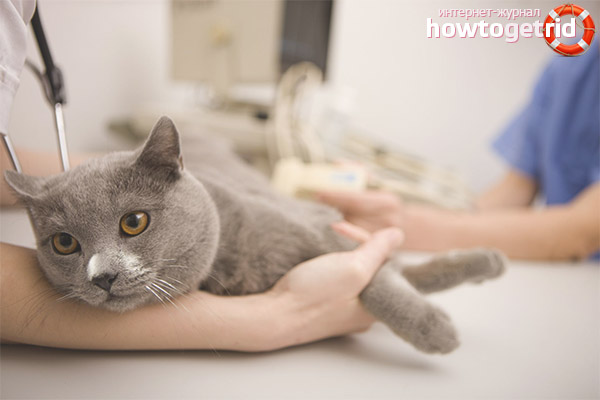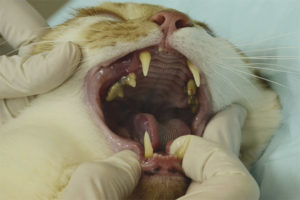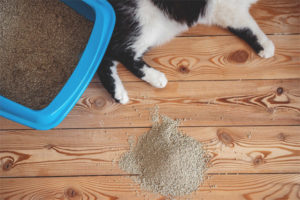The content of the article
Of course, it is very important for cat lovers that their pet is always cheerful, playful, active and sparkling with joy. But it is worth remembering that if a domestic cat often goes for a walk outside and communicates with other animals, then he has every chance of contracting scabies. The disease is quite serious and serious, it causes a lot of torment to a whiskered pet and a lot of problems. What kind of disease is this - cat scabies, what does it look like, can it be cured at home, and what should the owner do so that the mewing pet does not suffer from it?
What is this disease
Scabies in cats appears due to the fact that animals are bitten by tiny mites. In general, the hair of a pet (whether it be a dog or a cat) serves as a permanent den and refuge for many microscopic organisms, only most of them behave quite calmly, without declaring their existence. But there are some types of ticks that fall on the body of the animal and begin to bite it mercilessly, sucking blood, lymph and vitality. This is what Demodexcati, a mite that causes suffering to ordinary domestic cats, refers to. If you look at it through a microscope, you can see a tiny worm with short tiny legs, to the head of which a proboscis is attached. With this proboscis, he digs into the skin of an animal and draws out vitality. He lives in hair follicles and behaves calmly for the time being. What factors are needed to activate this parasite?
- The animal has reduced properties responsible for protecting the skin.
- A sharp decrease in immunity. This can happen if the pet has suffered some kind of illness and has not yet fully recovered from it.
- Feline age. As a rule, very young kittens or young cats that are not yet two years old get sick.
- Breed predisposition. It happens that representatives of a breed are prone to certain diseases. In this case, to scabies.
- Heredity.
Signs, symptoms
The main symptom of the disease is constant itching, the cat combing the skin before the appearance of blood, trying to get rid of parasites, literally gnawing them out of his body. The cat's muzzle, places around the ears and neck are most severely affected by a tick. If the cat began to itch furiously, you need to carefully observe it and examine the animal, whether it has the following symptoms.
- Wool falls out. The main places where this happens are ears, eyebrows, areas around the mouth and on the feet.
- In the place where the parasite invaded, cuticles are visible - the formations in the form of balls, similar to a lump after a mosquito bite.
- There may be a small hole or dot on the cuticles; when pressed, a thick white liquid flows from there.
- Inflamed skin around the ball.
- There are many red acne.
In addition to these mandatory symptoms, there may be other signs indicating infection:
- The pet becomes restless and aggressive in relation to the owners and acquaintances.
- The cat becomes lethargic.
- Appetite is lost.
- The skin becomes covered with abscesses, wounds appear.
If such symptoms occur, you should immediately contact your veterinarian and begin treatment, otherwise there may be complications up to the death of your pet.
How to treat scabies in a cat
First of all, it is necessary to accurately diagnose the disease. Some diseases (allergies, dermatitis, eczema, etc.) have very similar symptoms.For diagnosis, it is best to contact a veterinary clinic, where specialists will take a scraping of wool from a suffering animal, conduct microscopic examinations and tell you exactly what the pet suffers from. Having made the diagnosis, the veterinarian will precisely select the treatment and prescribe the necessary drugs, which will make it easier for the caudate patient.
In the treatment of scabies, complex treatment should be used. That is, use ointments that cope with the destruction of ticks, external solutions, anti-inflammatory drugs and give the animal the necessary vitamins. In such cases, the veterinarian prescribes the necessary course, which the sick cat must adhere to from a week to three (depending on the severity of the scabies).
The main medicine is sulfuric ointment, the composition of this drug includes sulfur, from which the parasites die.
Also, benzyl benzoate is used as an external agent, but this medicine is rarely used - it is very toxic and the cat that licked it can get poisoned and even die.
But to prevent this, a special collar is used, dressed on a cat's neck for the entire period of treatment and preventing access to hair and skin.
Disinfection and disinfection
After treatment is prescribed, it is imperative to disinfect the room where the cat lived, all items used for grooming and the surfaces that the cat touched.
The disinfection procedure is carried out simply: all of the above is treated with a special solution, washed with water and poured with boiling water. And such an action should be done regularly, until the sick animal has no symptoms of the disease. At the end of treatment, it is worth going to the veterinarian again so that he makes sure that the disease is defeated. Because it may happen that the visible symptoms disappear, and the consequences remain.
Can a person get cat scabies?
Ticks may well cross over to human skin and multiply there, but they do not leave moves. Due to the fact that people do not have such thick hair as animals, parasites have nothing to catch on, and there are no conditions for reproduction.
A person has a kind of scabies, but he is much weaker than a human disease. Nevertheless, after a person communicates with a sick animal, an itchy, inconvenient rash appears on his hands and in the hips and abdomen.
A similar condition can remain after the pet is healed, so you should go to the doctors. And we should not forget - the means by which the animal was treated (except for sulfuric ointment) are not suitable for a person.
Precautionary measures
While treatment is taking, the necessary precautions to prevent the spread of infection must be taken:
- If there are children in the house, forbid them to play with the cat until the animal recovers.
- If possible, place the animal in a separate room.
- The owner of the treatment should not touch the cat unnecessarily once more, and should contact as little as possible with the things that other household members use.
Treatment of a cat is usually done at home, only in rare cases when the disease is started, the animal is placed in a hospital.
Often, doctors prescribe for treatment not only ointments and injections, but also baths, where antiparasitic drugs are added. Owners should keep in mind that although the cat does not suffer from this (even quite the opposite), but interior items (for example, acrylic or porcelain bathtubs) can be damaged. It should also be noted that many drugs, which include sulfur, smell very badly of rotten eggs.
The best thing is to wear protective medical gloves when conducting medical procedures. This will protect your hands from harmful components and ticks that are ready to cling to the skin.
If possible, bathing a sick animal is best done on the street, and run into the house only when the coat is completely dry. This will allow you not to spoil the furniture and carpets, which after getting on them drugs turn yellow.
Alternative methods of treatment

Many cat owners, especially in places where there are no veterinarians nearby, treat their pets in folk ways. And although official medicine has no data on their effectiveness, it must be said that these methods work. Here are some of them, the most common and tested.
- Buckthorn bark is chopped and cooked for 10-15 minutes. The broth is infused for about half an hour, filtered. The skin is rubbed twice a day with the resulting solution at the same hours.
- The bay leaf is chopped and mixed with butter until a homogeneous mixture is obtained. It is applied to the skin three times a day.
- Skin chalk is brought to a powder state and rubbed into the skin.
- Three times a day, the skin is smeared with lavender oil.
Prevention
Not every owner wants to spend time curing his pet of scabies, so the best thing to do is to take preventative measures so that the cat does not catch this scourge. What needs to be done for this?
- If you suspect that the cat is going to communicate with an itchy, scabby animal, do everything so that communication does not take place.
- If a pet is accustomed to living at home, then it is better for her to live at home, as rarely going out. If the pet went for a walk - if possible it is worth checking to see if there are any infectious relatives in the area where he went.
- Often wash the bowl or plate of the pet and follow its hygiene in every way. Although cats are famous for their cleanliness, only some owner can do some things.
- Even a completely healthy cat needs vaccinations every six months. Then he will not get sick not only with scabies, but will also be protected from other diseases.
And finally: every year it is recommended to take the animal to the veterinarian for examination and testing. Then the specialist doctor will be able to detect signs of incipient diseases, and help the cat prevent the development of the disease.
Video: scabies in a pet











Submit